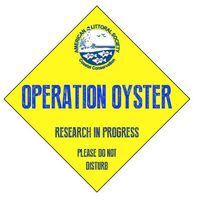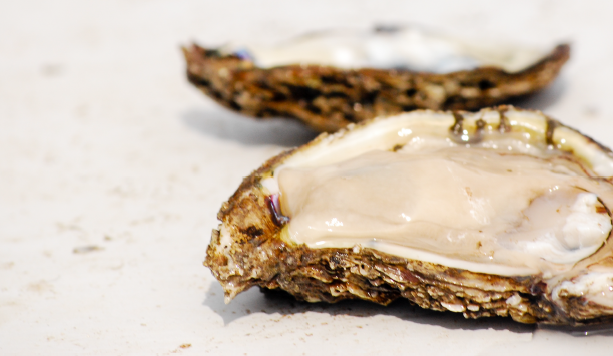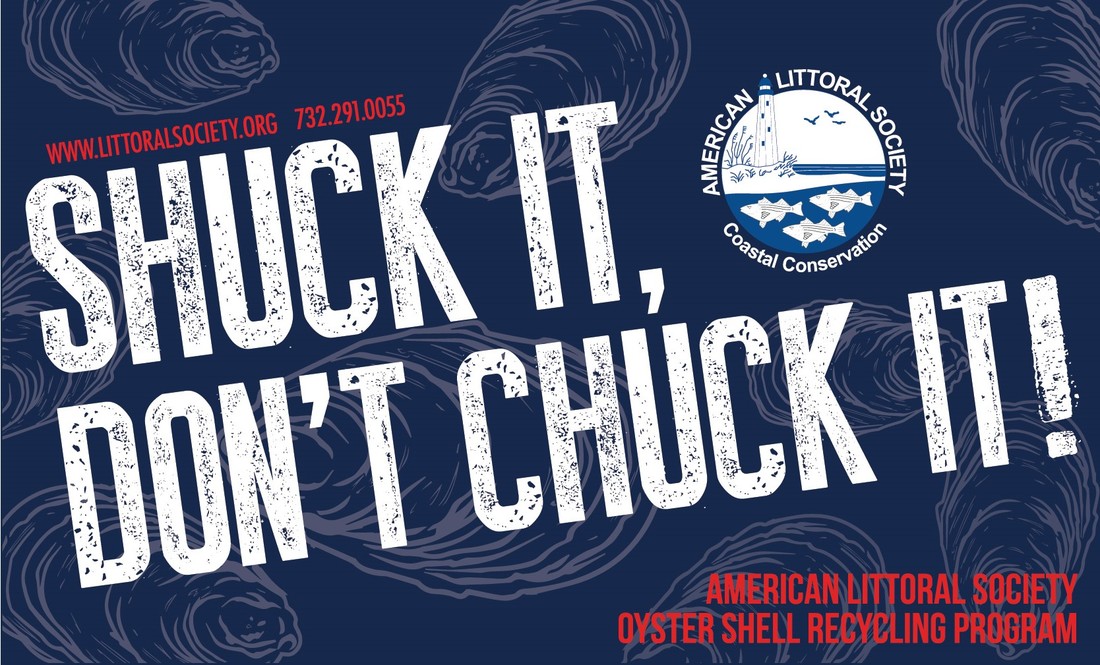Can Oysters Clean Our Rivers?
The American Littoral Society is working with project partners to run a science based, educational pilot project in the Navesink and Shrewsbury Rivers, which will investigate the presence of native oysters in the rivers in 2017, and in 2018 will use a "spat on shell" shell bag method to see where oysters might be viably grown in the river.
Here is the plan:
Here is the plan:

• Continue to consult with NJDEP for permits, licenses and approved procedures and practices.
• Volunteers bag shell at our oyster shell pile at Sandy Hook. The recycled oyster shell comes from local restaurants, which the Lusty Lobster collects and delivers to our shell pile.
• Local waterfront owners provide dock access to hang shell bags.
• Students will monitor the shell bags and the oysters. The Rumson School district will incorporate this pilot project and other Littoral Society initiatives into its 2017-2018 science curriculum with the goal of expanding the program into other schools.
• Local boat owners will provide services to transport shell bags to and from waterfront docks and assist with the monitoring. A parade of boats will deliver the shell bags to their locations.
• A spat tank will be set up at a local dock to raise spat (baby oysters). Thanks to funding from The Grove and Brook 35 students will have this outdoor classroom for scientific study. Additional corporate contributions will help expand the program.
• If water quality is deemed adequate, the "spat on shell" bags from the docks will be used to kick-start an oyster reef in the river. If conditions are not adequate for a river reef, any oysters grown in the rivers will be moved to an NJDEP approved location. They will not go to waste.
For more information about Operation Oyster, please contact Julie Schumacher at [email protected].
• Volunteers bag shell at our oyster shell pile at Sandy Hook. The recycled oyster shell comes from local restaurants, which the Lusty Lobster collects and delivers to our shell pile.
• Local waterfront owners provide dock access to hang shell bags.
• Students will monitor the shell bags and the oysters. The Rumson School district will incorporate this pilot project and other Littoral Society initiatives into its 2017-2018 science curriculum with the goal of expanding the program into other schools.
• Local boat owners will provide services to transport shell bags to and from waterfront docks and assist with the monitoring. A parade of boats will deliver the shell bags to their locations.
• A spat tank will be set up at a local dock to raise spat (baby oysters). Thanks to funding from The Grove and Brook 35 students will have this outdoor classroom for scientific study. Additional corporate contributions will help expand the program.
• If water quality is deemed adequate, the "spat on shell" bags from the docks will be used to kick-start an oyster reef in the river. If conditions are not adequate for a river reef, any oysters grown in the rivers will be moved to an NJDEP approved location. They will not go to waste.
For more information about Operation Oyster, please contact Julie Schumacher at [email protected].
Awesome Oyster Facts
|
|
• One adult oyster can clean up to 50 gallons of water per day. Oysters filter plankton, nutrients, chemicals, and other pollutants from the water. They are “Ecosystem Engineers.”
• Recent studies indicate that oysters are able to process lawn fertilizer nutrients that run off lawns and into the water. Those excess lawn fertilizer nutrients cause algal blooms which lead to other problems such as fish kills. • Oysters provide habitat. Mussels, barnacles, and other marine creatures settle on their reefs. This increases biodiversity, but also serves as a food source for important species like striped bass, crabs and other marine life. • Oyster reefs stabilize shorelines and prevent erosion by reducing the force of waves. As such, they can be a buffer against hurricanes and Nor'easters. • Oysters were once plentiful in the Navesink and Shrewsbury Rivers and were a major source of income for oyster farmers and watermen. • Since 2013 the Society has constructed three intertidal oyster reefs in Delaware Bay and two subtidal reefs in Barnegat Bay. This year the Society will be adding two more reefs in Delaware Bay and is working with its partners on a large scale plan for oyster reef restoration in Barnegat Bay. • Oysters need lime to build their shell and when calcium carbonate is mixed with water it converts to lime. Oysters also need a hard surface to grow on and oyster shell is the perfect foundation for oyster reefs. • The American Littoral Society runs an oyster shell recycling program called "Shuck It, Don't Chuck It,” which recycles oyster shell from local restaurants so the recycled shell can be used to support oysters in the water. |
Oysters will not be a "quick fix" to improve the river's health, but they could be one more way to help heal our rivers.



